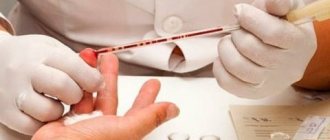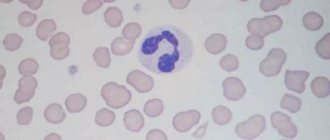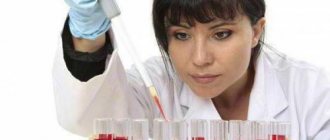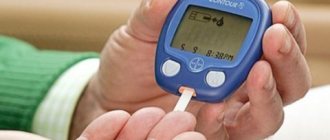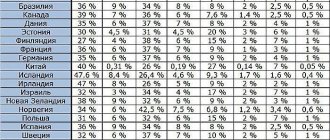When we take the test in the laboratory, we receive a form with the results. The results may depend on many factors: in which laboratory the analysis was taken, on the equipment in the laboratory, methods of analysis, age and gender, as well as other factors are taken into account.
Some test results give a simple yes or no answer (positive or negative). For example, a pregnancy test determines the presence or absence of the hCG hormone in the urine, and an analysis for antibodies to any infection determines their absence or presence in the body. This type of research is called qualitative.
More often, quantitative analyzes are used, the results of which are given in the form of digital values indicating a reference interval. For example, the result of an analysis for the level of bilirubin in the blood may look something like this: 0.9 mg/dl (reference values: 0.2 – 1.2 mg/dl). In this example, the analysis result falls within the reference values, that is, within the normal range.
What is reference interval
The average figure obtained during laboratory studies of a certain indicator is what reference values are in analyzes. As a rule, this determination of the concentration of blood components has two thresholds: lower and upper. If the examination results fall within the specified limits, the person is healthy. When there are deviations in laboratory intervals, the doctor can assume the presence of a disease.
How is it determined
There is only one way to establish the limits of the reference value - to study the norm of blood parameters of different populations, taking into account the patient’s age and gender. A target audience of a certain orientation is selected (for example, women under 30 years old) in the absence of pathologies. Then the blood counts of the entire group of patients are measured and an assessment of laboratory data is compiled, of which: 2.5% of people with high rates and the same number of respondents with low rates are excluded, the remaining 95% fill in the standard deviation values.
Quantitative and qualitative research
The results of some laboratory diagnostic methods are given on the patient's arm in the form of "positive" or "negative". Such values on the analysis sheet are called qualitative characteristics. When determining a quantitative characteristic, the result is given in hand as a digital value indicating the corresponding range. For example, to detect inflammation in the genitourinary canal, a C-reactive protein marker is examined. In a quantitative analysis, the norm will look like 0-6 mg/l, and in a qualitative analysis - 0.4 mg/l.
Where to look for references
You can find pictures for inspiration anywhere, but the first step is always to search Google or Yandex. This option is perfect if you just want to practice and don’t want to publish finished material yet. Otherwise, there may simply not be enough examples from the search engine, but then we resort to other resources.
The most extensive collection of design concepts, which is teeming with images on various topics. Here you can find photos, concepts, sketches, instructions, videos and lessons. However, the downside is that most of the pictures are protected by copyright. It’s even easier to search for examples not through the search bar, but through recommendations.

Photo stocks
There are many different stock services with high-quality and free images. Pixabay is one of the best options. This is a resource with thousands of illustrations. They can be downloaded from the service in high quality and used even for commercial purposes. But our main task is to find references, and there is definitely something to see here.
Platforms for designers
For example, Deviantart, where many artists publish their work. You can use the filter to find stock images and use them for inspiration; fortunately, there will definitely be many options.
There is also Dribbble, a small online community where many designers, illustrators and artists post their finished work and use the page as a portfolio. It is very reminiscent of Behance, only the posting format is different.
This huge social network is teeming with different images. The quality of the content in most cases leaves much to be desired, but sometimes it doesn’t matter, especially if you are looking for some large objects without detail to copy them.
Thematic groups on social networks
There are many thematic groups and communities where administrators publish materials for use as references. You can definitely find pictures in them that will best suit the theme of your project.
Normal limit value
The concept of reference values in international standards is accepted only for a small number of indicators, for example, for glucose, antigen or cholesterol. For most other blood tests, each laboratory sets its own limits, so there are no specific reference standards. The doctor and patient need to take into account only the data provided by the laboratory conducting the analysis.
Why do ranges vary from lab to lab?
Depending on the equipment, the test method used and how the analysis was performed, some reference values may differ between research centers. It is worth taking into account different calculation systems. For example, for folic acid the conventional range of units will look like 400-1600 µg/liter, and in the same SI system this value is 7-28 µmol/l. To interpret the analyses, the form must indicate the calculation system and approximate reference data of a particular laboratory.
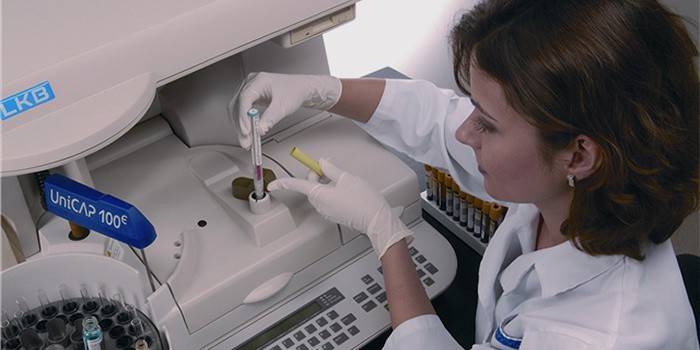
What does a result outside the reference values mean?
Due to the fact that the established interval is only approximate statistical data, and not a biological law, one cannot fully rely on its reliability. In some cases, studies indicate an increase in the concentration of one or another blood element in a particular patient. This is not always a sign of illness, but can be associated with the physiological characteristics of the body, external or internal factors.
It often happens that with frequent repeated tests, blood counts will go beyond the established limits. To assess the dynamics of changes, the doctor takes as a basis the average indicators obtained after all diagnostics. However, often a high concentration of certain blood components indicates dangerous disorders in the body: infection, inflammation, exacerbation of chronic diseases.
What factors influence the reference value
To obtain accurate results, before taking a biochemical blood test, you must follow all the doctor’s instructions. In addition to the accepted indicators based on the type of age and gender of the subject, changes in the reference interval may be influenced by a number of other reasons:
- pregnancy;
- menstrual cycle;
- alcohol consumption;
- stress;
- improper diet;
- individual characteristics of a person;
- taking certain medications;
- Times of Day;
- physical exercise;
- physiotherapeutic procedures.

Normal indicators in children
Clinical blood tests are taken from children from the first day of life. They help neonatologists and obstetricians determine the presence of problems, if any, and begin competent treatment. In the first days of life, the norms of red blood cells, hemoglobin levels and other blood characteristics are high, but over the years they gradually decrease. The reference range norms for different age groups are shown in the table.
| Indicators | Child's age | ||||||
| First day of life | 1 month | six months | 12 months | 1-6 years | children under 12 years old | teenagers | |
| Red blood cells | 4-8 | 4-6 | 4-5 | 4-5 | 3,5-4,5 | 3,5-4,7 | 3,6-5 |
| Hemoglobin | 179-241 | 114-176 | 109-142 | 110-137 | 110-139 | 110-144 | 114-149 |
| Platelets | 180-500 | 175-390 | 175-390 | 180-390 | 170-400 | 162-183 | 159-358 |
| Leukocytes | 9-25 | 7-14 | 6-13 | 6-12 | 5-12 | 4,5-10 | 4,3-10 |
| Reticulocytes | 30-51 | 3-15 | 3-15 | 3-15 | 3-12 | 3-12 | 3-12 |
| Lymphocytes | 13-37 | 41-77 | 43-75 | 39-73 | 27-61 | 25-55 | 21-51 |
Reference interval in tests in adults
Test results given to adult patients are accompanied by values that correspond to gender and age. The table below shows approximate normal ranges for each blood element. It should be remembered that results may vary depending on the laboratory in which the diagnosis was carried out. To interpret the tests correctly, you need to consult a doctor.
| Threshold values in adults | ||
| Indicators | Women | Men |
| Hemoglobin concentration, | 120-144 | 130-163 |
| Hematocrit | 34,3-46,6 | 34,3-46,6 |
| Red blood cells | 3-5 | 4-5 |
| Platelets | 180-360 | 180-360 |
| ESR | 2-15 | 1-10 |
| Leukocytes | 4-9 | 4-9 |
- Knitted baby suits for newborns
- How and with what to treat gardnerella in women
- High temperature in an adult, what to do
Individual norm for pregnant women
Human chorionic gonadotropin begins to be produced in large quantities from about 4-6 weeks after conception and is considered an important indicator for determining chromosomal defects of the fetus. The maximum concentration of hCG in the blood is observed at approximately 8-9 weeks of pregnancy, but after childbirth the levels begin to decline. Samples are taken from the woman weekly and appropriate conclusions are drawn based on the data obtained. You can set the norm yourself using the table:
| Reference hCG values | |
| Pregnancy period, by week | norm of medical indicators, honey/ml |
| 1-3 | 50 – 500yu |
| 5-14 | 1500 – 95000 |
| 15-25 | 10000 – 35000 |
| 26-38 | 10000 – 60000 |
Reference values in blood tests
If necessary, in addition to biochemical parameters, other blood components are taken into account. For example, to detect the level of enzymes of specific proteins that are secreted only by malignant tumors, you need to be tested for tumor markers. A diagnostic test of blood from a vein helps to establish hormone levels and reference glucose values for the presence of diabetes mellitus. All these studies have their own generally accepted transcripts.
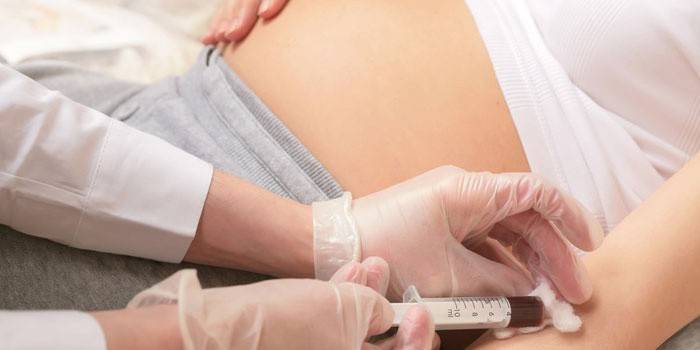
For tumor markers
To carry out the analysis, blood is taken from a vein. Tumor markers are found in small quantities even in healthy patients, but significant deviations from the norm indicate the presence of a tumor or an inflammatory process in soft tissue cells. The average limits of normal are:
- CA-125 up to 35 IU/ml;
- prostatic antigen 0 – 4 ng/ml;
- CEA 0 – 5 ng/ml;
- CA-15-3 – 9.2-39 IU/ml;
- ACE up to 15 IU/ml;
- CA-19-9 – 9.2-39 IU/ml.
For diabetes
Glucose levels must be analyzed in the morning on an empty stomach; 8 hours before the scheduled date, it is recommended to drink only mineral or plain water. To identify deviations, specialists compare a person’s own reference values with the norms indicated on the analysis form. To carry out the assessment, the average data is taken:
- sugar – from 4 to 6 mmol/l;
- C-septide – 0.9-4 ng/ml;
- immunoreactive insulin – from 4.5 to 15 µU/ml;
- lactate from 0.5 to 2 mmol/l;
- fructosamine - 205-285 mmol/l.
Hormone testing
Preparing for a blood test for hormones applies more to those who are forced to take medications: diuretics or oral contraceptives. To obtain reliable data, you will have to stop taking medications for a certain period of time or reduce their intake to minimum values. It should be noted that the concentration of hormones in women during menstruation is unstable, so this result cannot be considered reliable. The normal limits for hormones are shown in the table.
| Hormone | Normal range |
| TSH | 0.3 – 4.2 µIU/ml |
| TT3 | 1.3 – 3.2 nmol/l |
| Free triiodothyronine | 3.1 – 6.8 pmol/l |
| TT4 | 66 – 181 nmol/l |
| Thyroxine | 10.8 – 22.0 pmol/l |
| Antibodies to thyroglobulin | 0 – 115 IU/ml |
| Antibodies to thyroid peroxidase | 0 – 34 IU/ml |
Detailed description of the study
SARS-CoV-2 is an RNA beta coronavirus of the Coronaviridae family that was discovered in late 2021 in China. It is capable of causing acute respiratory infectious disease COVID-19 in humans ( CO rona VI rus Disease 20 19 ).
As a rule, the infectious process begins after the virus penetrates the epithelial cells lining the mucous membranes of the upper respiratory tract. In infected cells, active replication of the virus begins - a multiple increase in the number of copies of viral particles, or virions. New virions emerge from the affected cells and infect an increasing number of healthy cells, not only of the upper, but also of the lower respiratory tract. Including possible damage to type II alveolar cells, which determines the development of pneumonia.
SARS-CoV-2 virions are able to penetrate cells on the surface of which the membrane protein angiotensin-converting enzyme type II (ACE2) is present. For the virus, ACE2 serves as a receptor to which glycoprotein “spikes” (which include the Spike or S protein) located on the surface of viral particles bind. ACE2 receptors are present on the cell membranes of the organs of the respiratory and central nervous systems, esophagus, ileum, kidneys, bladder, and heart. The new coronavirus is capable of infecting brain cells, which is associated with a complete loss of smell in the early stages of the disease in some patients. According to some data, the virus is also able to penetrate cells whose membrane contains the CD147 protein.
There is one peculiarity in the interaction of viruses of the Coronaviridae family, including the SARS-CoV-2 virus, with the human immune system. In most other infections, the patient first develops antibodies (immunoglobulins) of the IgM class, and later - of the IgG class. During coronavirus infection, antibodies of the IgM and IgG classes are detected in the blood almost simultaneously (in the first 5–7 days after the onset of symptoms). In this regard, to determine the stage of the infectious process, it may be important not only to detect viral shedding (PCR test for coronavirus RNA), but also to simultaneously determine IgM and IgG antibodies in the blood. The results of these three studies will help determine whether a patient is contagious, or “infectious,” and will also help the doctor take into account the stage of the disease when prescribing treatment.
SARS-CoV-2 infection can be asymptomatic (up to 50% of cases), in mild and severe forms. In the latter case, the development of acute respiratory syndrome (Severe Acute Respiratory Syndrome, SARS) is possible against the background of bilateral pneumonia. The incubation period lasts 2–14 days (usually 5–7 days). After which the patient develops symptoms of acute respiratory viral infection (ARVI).
All people infected with coronavirus, even those whose infection occurs in an erased or asymptomatic form, are a source of infection already in the first day after infection. Since they release viral particles into the environment with exhaled air, when talking, coughing, sneezing.
It is important to remember that the pathogenesis of the new coronavirus infection has not yet been sufficiently studied. And even in patients whose infection occurs in mild or erased forms, the sudden development of acute respiratory syndrome against the background of pneumonia is possible.
In what cases are reference indicators not important?
There are cases when average statistical data is not taken into account by doctors. For example, in the presence of pathologies of the cardiovascular system, the level of cholesterol in the blood should be taken into account, but if its indicator is within the threshold of acceptable values, then it is considered not significant for making a diagnosis. There are other tests that take into account only qualitative characteristics. For example: blood test for drugs, alcohol test, diagnosis of hCG levels in non-pregnant women.
Complexes with this research
Women's safety Preventive examination of the pelvic organs 1,460 RUR Composition
Entry into IVF Examination when a woman enters the IVF procedure 13,590 RUR Composition
Pregnancy planning. Cervical screening and STIs RUB 2,830 Composition
IN OTHER COMPLEXES
- Examination during pregnancy. 3 trimester 5 150 RUR
- Women's check-up No. 2 4,090 RUR
- Women's reproductive health RUB 2,460
- Examination during pregnancy. 1st trimester 9,380 RUR


